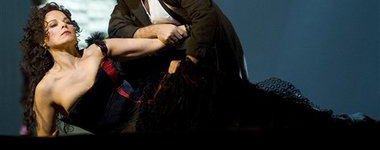 The 1980 Chicago poster I’ve displayed in my home since relocating to Southern California in 1987, shows the city as a child’s crayon coloring exercise. Blue Lake Michigan and green parks are in the forefront while the rest of the US recedes to the Pacific. New York and the Atlantic are seen beyond Asia giving the artwork a vitality which amuses and refreshes, just as the real city does for visitors.
The 1980 Chicago poster I’ve displayed in my home since relocating to Southern California in 1987, shows the city as a child’s crayon coloring exercise. Blue Lake Michigan and green parks are in the forefront while the rest of the US recedes to the Pacific. New York and the Atlantic are seen beyond Asia giving the artwork a vitality which amuses and refreshes, just as the real city does for visitors.
First-time guests are astounded by Chicago’s breath-taking lakefront, stretching for miles, awash in sailboats, marinas, pristine parks dotted with notable sculptures, fountains, all anchored by world-class museums set like glittering jewels into the vast parks. That’s the view from atop the Hancock Building…something not to be missed. It offers a superlative shoreline vista.
The sunlight bouncing o ff the lake, enhanced by the tens of acres of open spaces, gives the public buildings a fairytale feel, as though someone sketched them in watercolors. The openness of the lakefront owes a debt to Chicago architect Daniel Burnham. He designed among many projects, the lakefront parks, skyscrapers and the Chicago Columbian Exposition, 1893. Taking his cue from Baron Georges Haussmann, 19th century city planner of the old Roman city of Paris, which was entirely rebuilt to Haussmann’s designs, Burnham designed the city’s new look. Old Chicago was burned down in the Chicago fire, October, 1871. Burnham and the city’s leading citizens seized the opportunity to recast the city in more of a European style, yet, with strong American underpinnings. These were the people who were already collecting Renoirs, Monets and other masterpieces now found at the Art Institute. These vibrant successful Americans put their mark on the former swamp-city Chicawa.
ff the lake, enhanced by the tens of acres of open spaces, gives the public buildings a fairytale feel, as though someone sketched them in watercolors. The openness of the lakefront owes a debt to Chicago architect Daniel Burnham. He designed among many projects, the lakefront parks, skyscrapers and the Chicago Columbian Exposition, 1893. Taking his cue from Baron Georges Haussmann, 19th century city planner of the old Roman city of Paris, which was entirely rebuilt to Haussmann’s designs, Burnham designed the city’s new look. Old Chicago was burned down in the Chicago fire, October, 1871. Burnham and the city’s leading citizens seized the opportunity to recast the city in more of a European style, yet, with strong American underpinnings. These were the people who were already collecting Renoirs, Monets and other masterpieces now found at the Art Institute. These vibrant successful Americans put their mark on the former swamp-city Chicawa.
We never tire of ‘going home” to drink in the energy of vibrant Chicago. In August we made our annual pilgrimage to take in a championship roller hockey tournament, see the museums and do lunch on the lakefront. We sampled a café in Millennium Park and delighted in being at the pinnacle of pleasure at the delightful Signature Room, on the 95th floor of the iconic Hancock Building, Michigan Avenue.
Of course, we paid our respects to the fabulous Impressionist painting collection at the Art Institute of Chicago. I’ve got the postcards of Renoir’s “Two Sisters – On theTerrace,” “The Rowers’ Lunch,” to prove it. In fact, my collection includes one of the miniature Thorne Rooms and the monumental Georges Seurat “A Sunday on La Grande Jatte”- which I obtain over and over. I also raid the gift shop for children’s art books. Always treasures to be found there. The thrill of being in close proximity to great masterpieces right in one’s own hometown encourages the soul to relish creativity. Our friends took in the new modern wing of the museum…a bridge too far for bad knees.
 After seeing the paintings (“On The Terrace”is still on the back wall where it is not seen to advantage) we strolled a block north to the Park Grill, tucked under the lee of the stunning sculpture affectionately called “The Bean.” Sam, our waiter, secured a secluded alcove for our party of six old-time friends. It was relaxing and fun. The menu offers seafood, salads and pastas, as well as kobe burgers ($17),grilled turkey burgers ($14) and chicken wraps ($14.50). Opening with friedcalamari ($10.50) we tried salads and burgers – all declared delicious. For quality and ambience diners felt the experience was highly enjoyable.
After seeing the paintings (“On The Terrace”is still on the back wall where it is not seen to advantage) we strolled a block north to the Park Grill, tucked under the lee of the stunning sculpture affectionately called “The Bean.” Sam, our waiter, secured a secluded alcove for our party of six old-time friends. It was relaxing and fun. The menu offers seafood, salads and pastas, as well as kobe burgers ($17),grilled turkey burgers ($14) and chicken wraps ($14.50). Opening with friedcalamari ($10.50) we tried salads and burgers – all declared delicious. For quality and ambience diners felt the experience was highly enjoyable.
The next day, my husband, Dan and I, selected the best lakefront restaurant for viewing the splendid scenes of Chicago– the Signature Room (as in John Hancock) on the 95th at the Hancock Building. Go in the daytime for spectacular lakefront vistas to four states: Wisconsin, Michigan, Indiana, Illinois. Looking like dollhouses in the distance one sees the Field Museum, Shedd Aquarium, Museum of Science and Industry and acres of gorgeous parks and marinas. Roof-top swimming pools down below on city buildings were curiously empty on that hot August day, as were the streets. Relatively little traffic was seen in what is the heart of Chicago’s Magnificent Mile of North Michigan Avenue.
Looking like a child’s Lego playland was Navy Pier with its Ferris Wheel (George Washington Ferris’ invention was first seen at Chicago’s Columbian Exposition 1893) and other attractions, including Chicago River tour boats which go through the locks – sort of a mini-Panama Canal cruise. The locks and river reversal are a marvel of civil engineering. The reversal in 1900 enabled the city to send its sewage down to the Mississippi preserving the lake for drinking water. Construction of the Ship and Sanitary Canal was the largest earth-moving operation that had been undertaken in North America up to that time. It was also notable for training a generation of engineers, many of whom later worked on the Panama Canal (1904-1914). City and suburban residents get their water from the lake, and enjoy the best-tasting water of any metropolis.. The Signature Room’s special summer $15 buffet had packed the space, which gave it a big city vibe. Beautifully dressed families celebrating graduations kept company with office groups, shoppers, as well as cuddly duos. The room is elegant, yet, casual, with white tablecloths topped with white butcher paper. My lobster bisque ($7) was delicious. I was surprised by the oversized yummy Cobb lobster salad ($22). What thrilled most was the heart-stopping city panorama a foot away through plate glass windows: spectacular! After you enjoy the day sights, go back at night for dinner in this romantic setting.
To all this satin we added a touch of burlap by creating a cheering section for our Huntington Beach, CA, grandson, Andrew DeCarlo’s State Wars Roller Hockey Championship Tournament in suburban Darien, contiguous to our former home in Downers Grove. When Andrew learned where the games would be played…he said, “Oh, good, the family can come to see me.” And they did. From great-great aunt Gen DeCarlo DeMaio to Chicago Softball Hall of Famer great-uncle Peter Rocco and aunt Jen, to aunts, cousins and friends too numerous to imagine. It was great fun. Andrew, 10, of course, played on the California team (selected in try-outs). The well-organized and well-executed State Wars Roller Hockey Tournament, under Tim McManus’ management, paired teams from nearly 30 US states and Canadian provinces. It was declared “…best roller hockey tournament we’ve participated in…” by parents Michael and Lorena DeCarlo…sister Michelle loved collecting the state pins each player was given.
Andrew’s Div. 99 A CA team took the Gold Medal and Andrew played on the winning All-Star Team. My lifelong girlfriends fell in love with the little girl on Andrew’s CA team – Tanner Gates, San Diego, Ca. . Her long blond pigtails flew across the rink and even when three players tried to mu scle her she fluffed them off. How wonderful girls today have these opportunities in sports. The entire tournament was exciting and greatly enjoyable. Chicago is a city of superlative action…I wouldn’t go so far as the new Mark DeCarlo book, “Fork On The Road: 400 Cities One Stomach,” which says…” if you are bored during the summer in Chicago, slap the loser in the mirror.” But he has a point. There’s an endless array of festivals, concerts, museum exhibitions all through the year…find your fun at www.cityofchicago.org and make your day.
scle her she fluffed them off. How wonderful girls today have these opportunities in sports. The entire tournament was exciting and greatly enjoyable. Chicago is a city of superlative action…I wouldn’t go so far as the new Mark DeCarlo book, “Fork On The Road: 400 Cities One Stomach,” which says…” if you are bored during the summer in Chicago, slap the loser in the mirror.” But he has a point. There’s an endless array of festivals, concerts, museum exhibitions all through the year…find your fun at www.cityofchicago.org and make your day.
###
Credit: Angela Rocco DeCarlo is a former Chicago journalist. Author Mark DeCarlo is her son. His new book, “A Fork On The Road: 400 Cities One Stomach” is available at bookstores and online and is based on his popular Travel Channel TV show “Taste of America with Mark DeCarlo,”
Copyright, 2010









